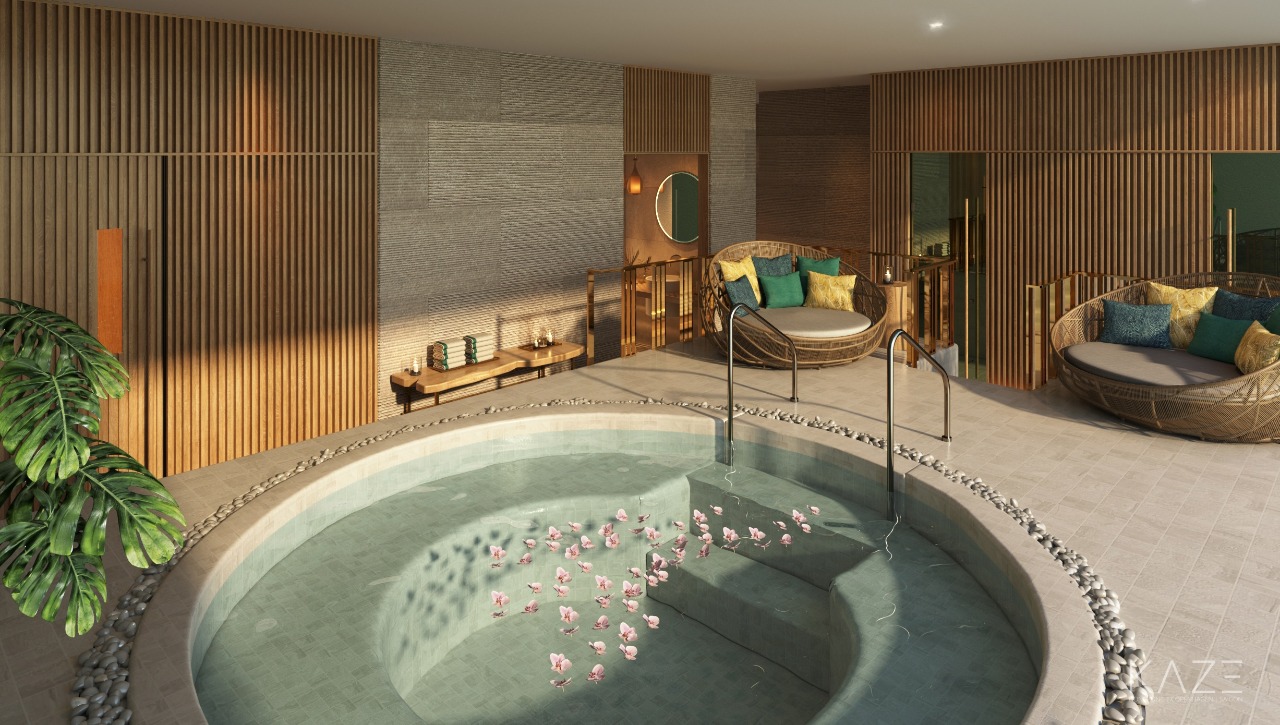When Vietnam closed its borders to travelers in March 2020, hotels and resorts were also forced to shut their properties. For some, the temporary pause on business operations was an opportunity to finally make major renovations. High-end hotels added new amenities that feature smart technology to avoid physical contact, or create more green outdoor spaces to promote safe distancing among guests. Some properties also completely rebranded into wellness resorts that encourage fitness and healing-centered retreat.
While all these changes are seen to redefine a post-pandemic hospitality industry, the overall vibe and experience exuded by the property are largely hinged on how it’s designed — colors, arrangements, materials used, and all. As the team behind renowned properties Sailing Club Residences Hanoi and Le Meridien Cam Ranh Resort & Spa, KAZE Interior Design Studio knows what a luxury hotel should look like: Functional yet artful, rich in details, tells a story, and built for humans.
The whole process from conceptualizing a design to making the final touches isn’t straightforward and unchallenging, even for seasoned interior designers. It’s a long process that includes certain phases and procedures, both technical and creative, said Fong-Chan Zeuthen, founder of KAZE. Before everything else, it’s important to “date the space.”

“Dating the space, as we put it, is learning about every aspect of it. Before making any intervention, or creating any changes, we try to understand it first. In other words, we work with the space, make the best out of it, respect it, not just overrule it for the sake of a total makeover.”
And while trends come, perish, and re-emerges as time passes, Fong-Chan believes they are a reflection of movements — actual events, concerns, or actions happening in a certain area or around the world. With some social interventions, these movements become trends, in the form of a much-needed evolution.
As a pioneer in the field, Fong-Chan gives her take on the significant new trends on high-end hotel interior designs that reflect what the industry has learned after two years of pandemic life.
Back To Nature
Because people have been trapped in their homes for a long time, all they crave now is a time with nature — or at least the feels of it. Travelers will be looking at hotels and resorts that exude a laidback vibe and stimulate a back-to-nature lifestyle. Neutral, earthy colors like brown in various shades will most likely dominate specific areas of the hotel, especially those outdoors. There will also be furniture, finishing, and decorative objects made with a touch of nature, say a peacock chair made from woven wood or an aesthetic log lamp.

Cultural Elements
When designing luxury hotels in Vietnam, besides industry and professional standards, elements like feng shui and other cultural and religious symbols are of high consideration. To give every project a unique encounter, the incorporation of these elements varies to the extent of its appropriateness, and the client’s preferences. For example, the number of stairs within the premises, or the selection of specific colors or materials that embody specific beliefs and traditions. Other times, it takes a more in-depth understanding to apply these elements in the bigger picture.

Personal Space
As companies start to accept that remote working is here to stay even after COVID-19, people will be making an “office” right inside their hotel room. It’s worth noting for hotel designers to create a conducive space where guests can still be productive while on vacation. Putting in a desk, lampshade and chair won’t be sufficient, however. Hotels need to rethink floor size and the arrangement of furniture. With comfort and space in mind, the area should also allow the guest to breathe and relax. The use of softer seats, placement of green plants and incorporating designs and patterns that optimize the space will elevate the guest experience.

Sustainability
Considering the impacts of the global health crisis and climate change on humanity and the environment, sustainability has gone from being a mere corporate social responsibility initiative of the hospitality industry to a necessary move. Hotel developers and designers are now taking real actions to promote eco-friendly products and services within the property. When you enjoy your stays at different hotels and resorts this year, don’t be surprised to see fewer plastic bottles being offered, no disposable cutleries being served, natural lighting and fresh air being maximized, and plants and greenery being highlighted. Furthermore, many designers will be more mindful in selecting materials. For instance, instead of genuine leather, more and more will go for microfiber, which delivers the required visual effect, but not necessarily harms any living animal.

